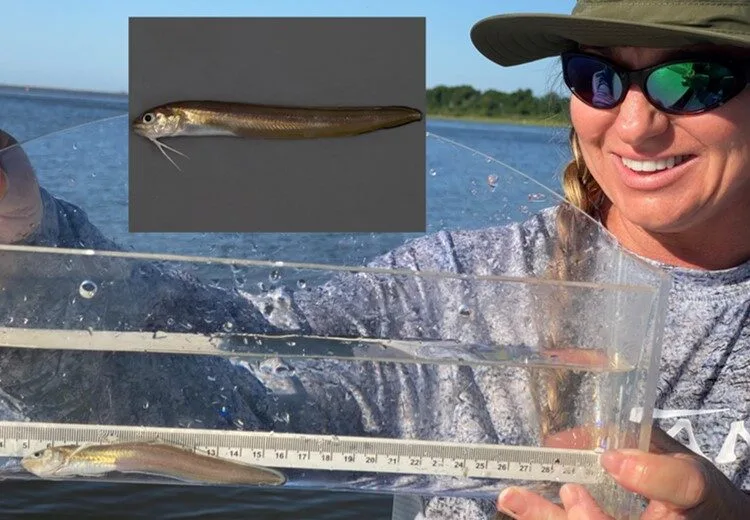This past week’s EFMC sampling in Sapelo Sound yielded an impressive mix of fishes that always generate excitement from our field crew; northern pipefish, ocellated flounder, black and rock seabass, big head sea robin, southern and spotted hake and freshwater goby to name a handful. We also caught one of my personal favorites, the feather blenny (Hypsoblennius hentz). Why such affection? Besides just being a cool looking fish, a local shrimper once told me feather blennies are the “chihuahuas of the estuary,” because of how territorial they can be… how could you not love a fish with that kind of reputation?!
Feather blennies belong to the family Blennidae, which includes several hundred species of mostly bottom dwelling fish that are found throughout tropical and subtropical estuarine and nearshore coastal waters. Like most blennies, feather blennies are small (less than 4 inches), elongated scaleless fish with long dorsal fins that run along their backs. Their large eyes sit high on their blunt-shaped head, and their body is spotted with brown and white coloring along its entire body. Male feather blennies also have a blue spot near the front of their dorsal fin. Feather blennies get their name from the two feathery extensions on top of their heads known as cirri, which are used for sensory purposes. If you have never seen a feather blenny, you would not be alone as they are fairly secretive. In Georgia’s estuaries they are associated with oyster reefs, shell rubble, soft corals and other hard bottom substrates where they can easily hide in crevices and holes. Not the strongest of swimmers, they also rely on their cryptic coloration to blend into their surroundings to avoid predators. Feather blennies belong to a group of blennies known as “comb-tooth blennies” due to their comblike-shaped teeth. They use these specialized munchers to feed on worms, small crustaceans, soft corals, algae, and occasionally the unsuspecting researcher who put his/her finger too close to its mouth!



